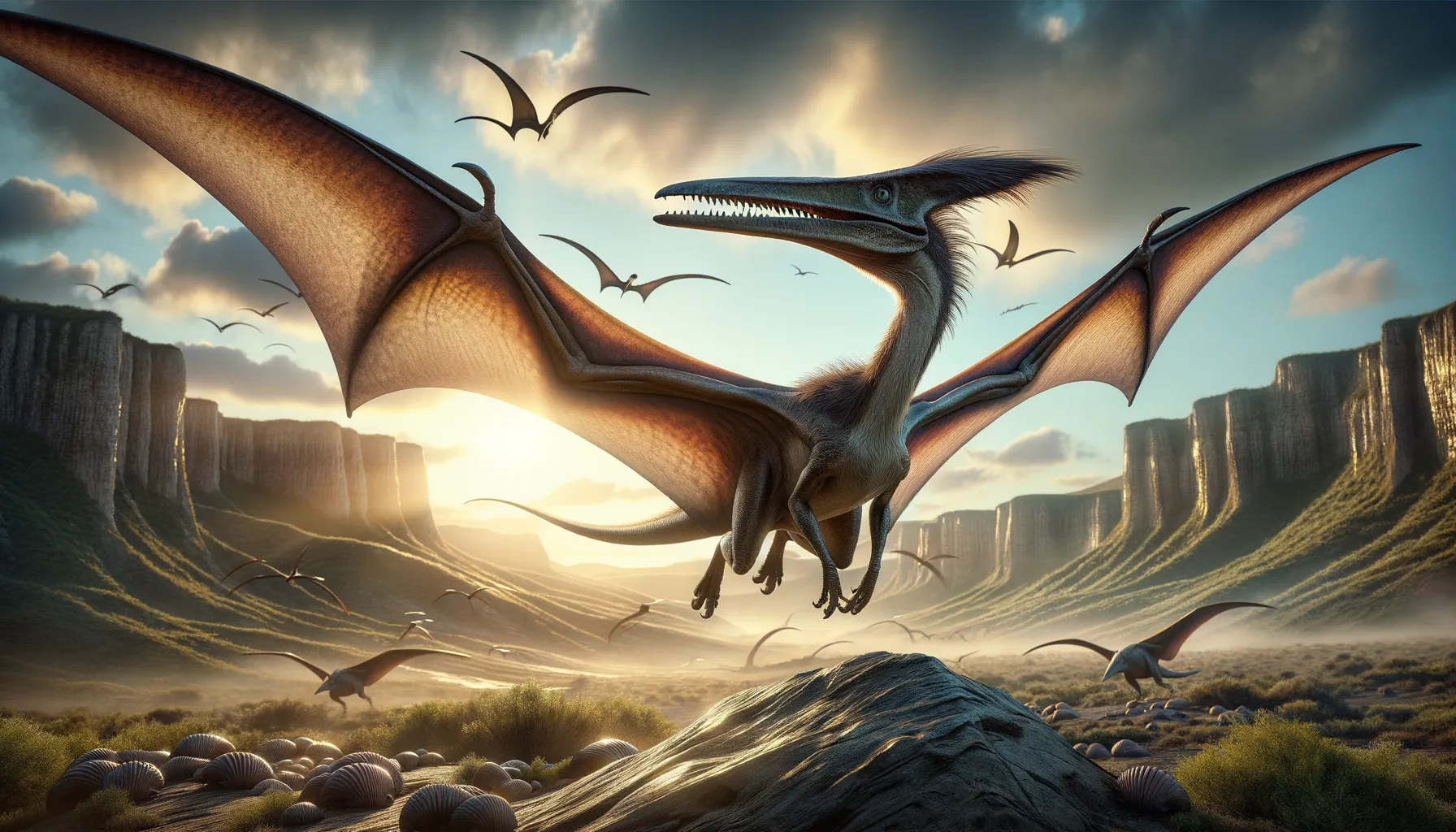
Dimorphodon
Master of short flights, ancient aerial prowler!
Period
Jurassic
Length
Roughly 1 meter in length.
Height
About 30 cm tall.
Weight
Approximately 1 kg.
Dimorphodon was a small pterosaur known for its unique dual-type teeth, adapted for both gripping prey and breaking shells. It was an early Jurassic species, whose fossils were first discovered along the coastal cliffs of England. Despite its dinosaur-like moniker, it was one of the early flying reptiles, possessing a resemblance to modern birds with its lightweight body and wings capable of gliding short distances.
Diet
Dimorphodon primarily consumed small prey such as insects and fish. Its varied diet was supported by the distinct dental structure that could handle different types of food. The combination of sharp and flat teeth allowed it to adapt to diverse food sources available in its habitat.
Hunting
Dimorphodon hunted using its keen eyesight and quick, darting movements to capture prey. It likely perched in trees or cliffs to spot its next meal, swooping down with agility. Its relatively small stature made it agile enough to catch fleeting prey in flight or from the ground.
Environmental challenges
Living in the Jurassic period, Dimorphodon faced environmental challenges such as fluctuating climates and volcanic activity. It adapted by taking advantage of its flying capabilities to navigate and reach new areas for resources. The competition for food and nesting sites with other pterosaurs and land dinosaurs posed challenges in securing its niche.
Speed
Moderate flyer, capable of short bursts.
Lifespan
Estimated to live several decades.
First discovery
Discovered in 1828 by Mary Anning in England.
Fun Facts
- Dimorphodon lived during the early Jurassic period, about 200 million years ago.
- This dinosaur's name means 'two-form tooth,' referring to its unique teeth pattern.
- Dimorphodon had a wingspan of about 4 feet, similar to the length of a skateboard.
- Unlike most flying reptiles, it had a short neck and large head, resembling a modern-day puffin.
- Dimorphodon's fossils were first discovered in England in the 1800s by Mary Anning, a renowned fossil hunter.
- It is believed that Dimorphodon may have been more of a glider than a powerful flier.
- Despite its fearsome appearance, Dimorphodon was likely an insectivore, feeding mainly on small prey.
Growth and Development
Dimorphodon hatchlings were likely precocial, meaning they could move shortly after hatching. These young pterosaurs would grow rapidly, developing the characteristic wing structures essential for flight. Juveniles possibly remained in near-shore environments where food was abundant and competition was lower.
Habitat
Their habitat consisted of coastal regions with cliffs and open spaces, facilitating their takeoff and landing. Dimorphodon also frequented forests, where they could find ample food and places to roost. The proximity to water allowed them to exploit marine resources efficiently.
Interaction with other species
Dimorphodon coexisted with various other prehistoric reptiles and mammals, competing for food sources. Its presence in the ecosystem contributed to controlling insect populations and small prey species. They might have interacted with other pterosaurs, either competing or sharing resources based on availability.
Natural lifespan
Likely lived for about 20 to 25 years.
Reproduction
Dimorphodon probably laid eggs, like other reptiles of its time. Nests were likely built in secluded, safe areas to protect the young from predators. The reproductive strategy involved producing multiple eggs, increasing the chances of offspring survival.
Social behaviour
Dimorphodon may have exhibited social behaviors such as group foraging or nesting along with other pterosaurs. This social structure could have offered protection from predators and facilitated the sharing of resources. Communication may have involved vocalizations or visual displays for mating or territory defense.
Fossil locations
Fossils primarily found in the United Kingdom, notably Lyme Regis. These fossils give insights into their morphology and possible habits. Additional fossil evidence may be discovered in similar coastal deposits elsewhere, broadening our understanding of their distribution.
